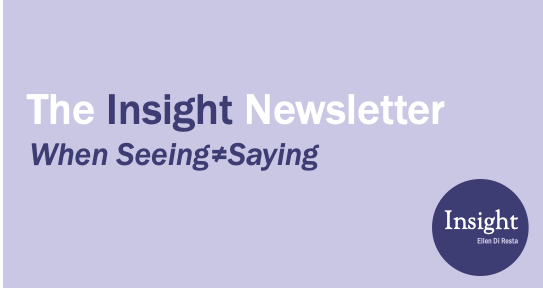“Your actions speak so loudly I can’t hear a word you say.” – Ralph Waldo Emerson
A client expressed a concern the other day that reminded me of the above quote. During several customer interviews, he noticed that there was a disconnect between what people said and what he then observed them doing.
When I asked him what he did as a result, he answered “I used the info they told me. I didn’t want to second guess them.” To him, the customer’s direct response represented concrete truth, while his observation was merely conjecture. The only certainty I could give him was to let him know that in the future, this disconnect is where the deep research starts!
According to Quote Investigator, the Emerson quote came from an essay he wrote in 1875. In looking it up, I was surprised to find another relevant line:
“A lady of my acquaintance said, “I don’t care so much for what they say as I do for what makes them say it.”” – Ralph Waldo Emerson
The entire paragraph is about the idea, and general acknowledgement, that we can’t determine much about a person from what they say directly. To fully understand someone’s intentions, we need to take a deeper look. This is not a new idea.
Today we have sophisticated research tools, statistical methods, AI, etc. to speed the process of customer research, but are we really doing a better job at understanding people? I would say in most cases, no. We’re not doing better because we’re using our new tools at the wrong point in the process, and drawing the wrong conclusions as a result.
Tools that rely on consumers’ direct responses and large sample sizes are great for confirming that an idea was developed as originally intended. They give us certainty, and right before launch this is exactly what we need. However, to understand how to develop the right product, to establish the right initial intention, we need to go deeper.
Here’s the problem I see time and again. At early stages, the products we think the market will value are based on our own opinions, or on initial reviews of what people say they want. We can test these ideas and develop a level of certainty about the results.
But this early certainty can lull us into a false sense of security. Once in market, people often behave very differently from what they initially indicated. This can be avoided if we dig deeper and embrace the uncertainty early on.
Once we figure out why people are saying and doing what we observe, we are free to create new solutions our customers would never have asked for, but we know they will love. We can then build greater certainty along the way, starting from a solid foundation. When done this way, final launch testing confirms what we should already know.
There are no shortcuts for building this level of certainty along the way. The initial need to dig more deeply was true in 1875, and it’s still true today.

